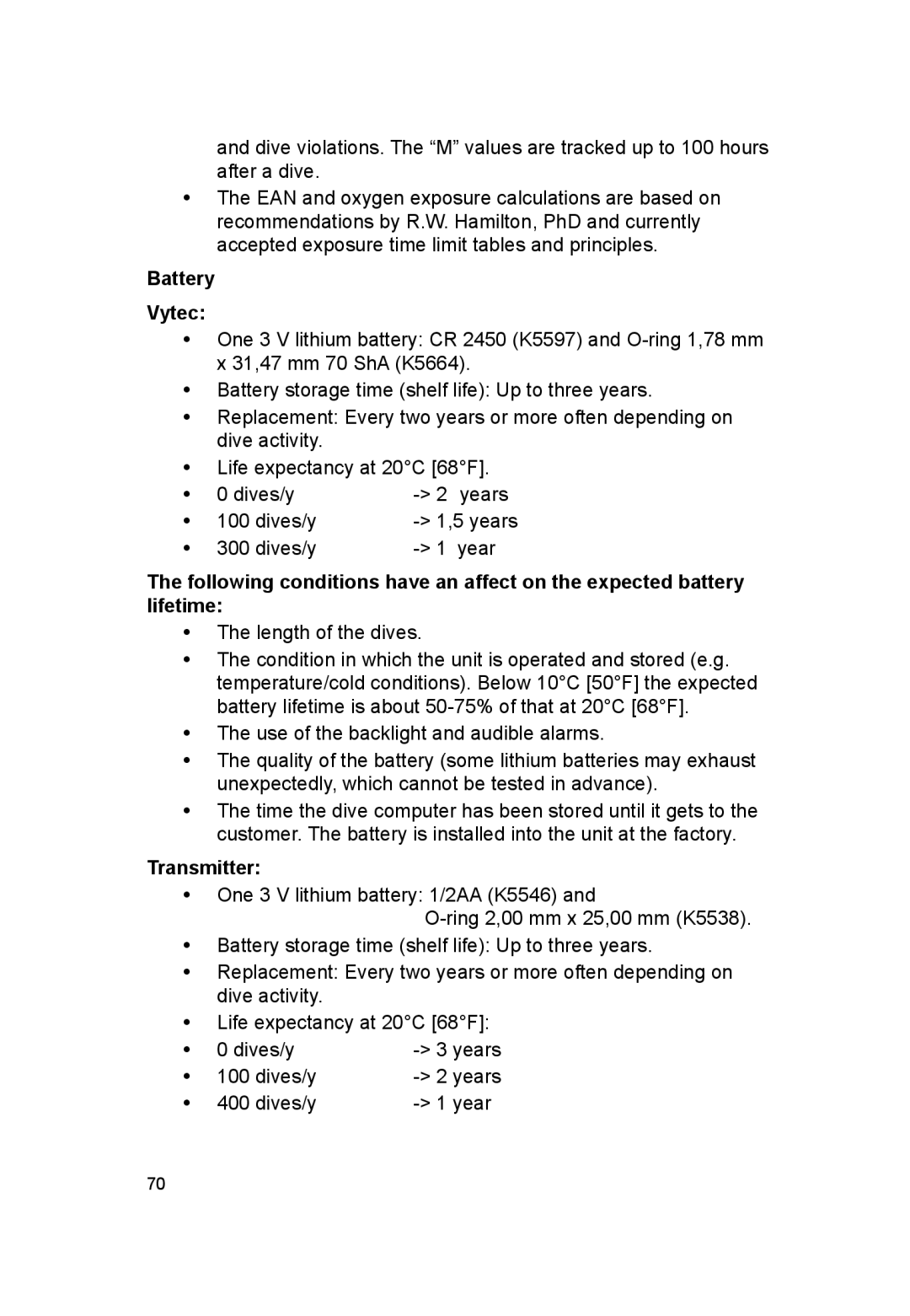and dive violations. The “M” values are tracked up to 100 hours after a dive.
•The EAN and oxygen exposure calculations are based on recommendations by R.W. Hamilton, PhD and currently accepted exposure time limit tables and principles.
Battery
Vytec:
•One 3 V lithium battery: CR 2450 (K5597) and
•Battery storage time (shelf life): Up to three years.
•Replacement: Every two years or more often depending on dive activity.
•Life expectancy at 20°C [68°F].
• | 0 dives/y | years | |
• | 100 dives/y | ||
• | 300 dives/y | year | |
The following conditions have an affect on the expected battery lifetime:
•The length of the dives.
•The condition in which the unit is operated and stored (e.g. temperature/cold conditions). Below 10°C [50°F] the expected battery lifetime is about
•The use of the backlight and audible alarms.
•The quality of the battery (some lithium batteries may exhaust unexpectedly, which cannot be tested in advance).
•The time the dive computer has been stored until it gets to the customer. The battery is installed into the unit at the factory.
Transmitter:
•One 3 V lithium battery: 1/2AA (K5546) and
•Battery storage time (shelf life): Up to three years.
•Replacement: Every two years or more often depending on dive activity.
•Life expectancy at 20°C [68°F]:
• | 0 dives/y | |
• | 100 dives/y | |
• | 400 dives/y |
70
